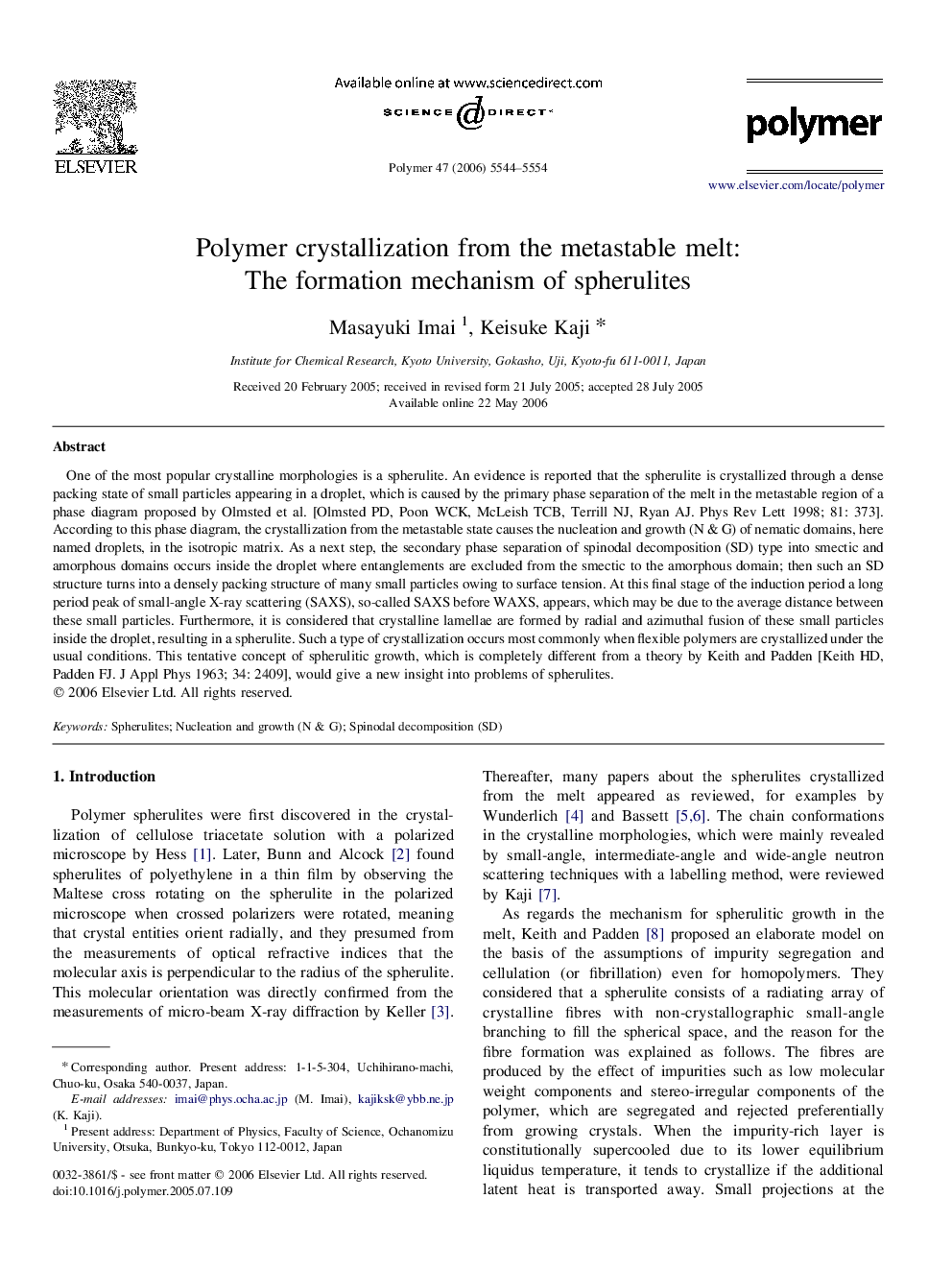| Article ID | Journal | Published Year | Pages | File Type |
|---|---|---|---|---|
| 5189165 | Polymer | 2006 | 11 Pages |
Abstract
One of the most popular crystalline morphologies is a spherulite. An evidence is reported that the spherulite is crystallized through a dense packing state of small particles appearing in a droplet, which is caused by the primary phase separation of the melt in the metastable region of a phase diagram proposed by Olmsted et al. [Olmsted PD, Poon WCK, McLeish TCB, Terrill NJ, Ryan AJ. Phys Rev Lett 1998; 81: 373]. According to this phase diagram, the crystallization from the metastable state causes the nucleation and growth (N & G) of nematic domains, here named droplets, in the isotropic matrix. As a next step, the secondary phase separation of spinodal decomposition (SD) type into smectic and amorphous domains occurs inside the droplet where entanglements are excluded from the smectic to the amorphous domain; then such an SD structure turns into a densely packing structure of many small particles owing to surface tension. At this final stage of the induction period a long period peak of small-angle X-ray scattering (SAXS), so-called SAXS before WAXS, appears, which may be due to the average distance between these small particles. Furthermore, it is considered that crystalline lamellae are formed by radial and azimuthal fusion of these small particles inside the droplet, resulting in a spherulite. Such a type of crystallization occurs most commonly when flexible polymers are crystallized under the usual conditions. This tentative concept of spherulitic growth, which is completely different from a theory by Keith and Padden [Keith HD, Padden FJ. J Appl Phys 1963; 34: 2409], would give a new insight into problems of spherulites.
Keywords
Related Topics
Physical Sciences and Engineering
Chemistry
Organic Chemistry
Authors
Masayuki Imai, Keisuke Kaji,
